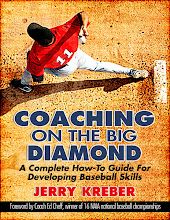Sunday, February 18, 2007
The "Extra" Addition

The Ulnar Nerve Follow-Up
For the last month, I have really tried to start understanding the Ulnar Nerve’s appearance and function. Last week, I posted an article outlining a hypothesis that may help the functional strength and durability in the elbow. The article also offered facts and details labeling the elbow’s physical features.
Just a little follow up to the recent article I posted. This weekend, I got a chance to spend some time with medical students from the University of Nebraska Medical Center. Our conversations centered on the function of the Ulnar Nerve in a player’s throwing arm. One student indicated that the Ulnar Nerve was only stimulated when the arm conducted activities at 90 degrees. He then offered the suggestion,” It is pretty easy to help a pitcher that does not want to get hurt. Don’t throw the ball with the arm at 90 degrees.”
His response did not surprise me because I found that data in my research. He stated almost the exact same statistic I found during my informational journey. Actually, the article I found that information in was an employment guide for carpenters doing overhead construction work. But, I did have to correlate this information with data Chris O’Leary collected about pitchers who have suffered serious arm injuries. He has researched many pitchers through pictures and motion video. He has a fantastic website at www.chrisoleary.com.
O’Leary has concluded that pitchers should not raise their pitching arm elbow above the shoulder. When they do, he claims, pitchers are more susceptible to injuries. At first glance, many would argue this pitching claim. Analyzing the data, it is clear to see he may be on to something. When a pitcher throws at 90 degrees in an overhand motion, their arm is elevated above the shoulder. Medically speaking, this position causes the Ulnar Nerve in the throwing arm to activate and pitchers stretch and stress the nerve to its maximum capacity.
To practice a safe angular arm position, pitchers might try to bring the ball by the ear as they rotate toward their target. If the ball splits the ear, their elbow stays in a position less than 90 degrees. According to the research and the medical people I have talked with, this may lead to less Ulnar Nerve stress during the throwing motion. When practicing this cue it is important that players make an effort to pull their glove back into the body. When the arm is at a decreased angle, it makes it easier for players to really supinate the arm across their body. By focusing on the front side, pitchers can protect the arm while trying to stay in a straight line path with the target.
